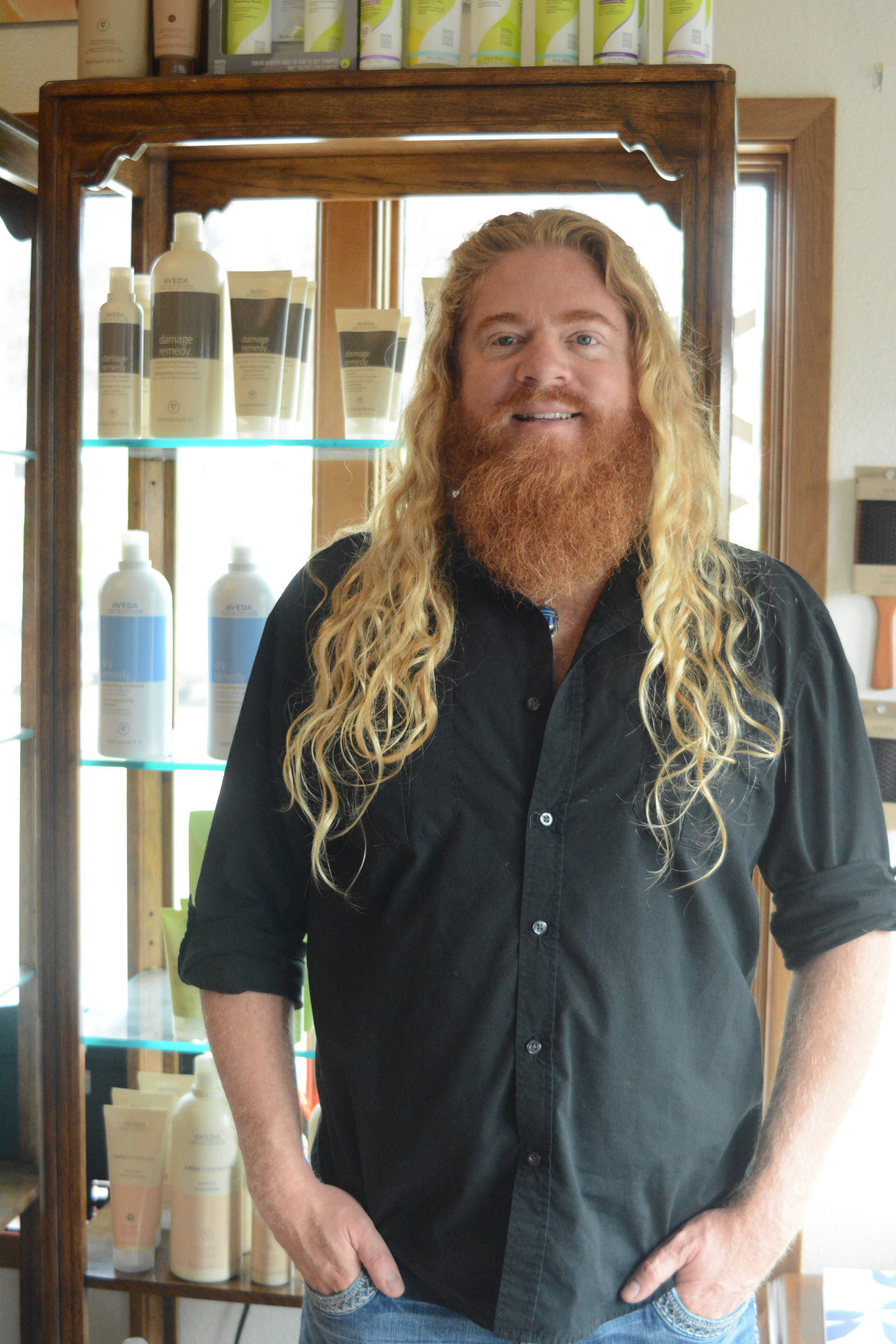In the beauty business, just as for beers, bars and bicycles, certain brands elicit fierce loyalty. For some women, Aveda, a line of plant-based hair products, that loyalty can be so strong they’ll drive all the way to Anchorage to get their hair done at an Aveda salon.
Now they don’t have to make that drive.
Earlier this month, J. Eston Salon, a one-chair salon owned and operated by the stylist formerly known as Jeremy Eston Youngblood, became the first Aveda salon in Homer and on the Kenai Peninsula. Eston now goes by his middle name. Last week, he made the designation official when he put up the “Aveda” decal in the window of his shop in the back of the Homer Council on the Arts.
“They’re all really excited about it,” Eston said of his clients’ reaction to him becoming an Aveda salon. “I feel I’m getting major buzz. People have been wanting Aveda.”
Eston, 41, has been in Homer since 2001 and a stylist since 2003. Tall, with flowing strawberry-blond hair and a beard to match, he also has a following. Several years ago when he returned from a year-long sabbatical to study at the Sasoon Academy in London and travel, women could be overheard at the grocery store saying, “Jeremy is back” the same way birders might exclaim at the site of the elusive red knot.
Austrian stylist Horst Rechelbacher founded Aveda in 1978 in Minneapolis, Minn., where he had settled in 1963 after being injured in a car accident. The inspiration for Aveda came from his study of yoga and meditation and visits to India. The vision of Aveda is “to bring beauty professionals botanical products that would be good for them, their guests, and the Earth and its communities,” according to his biography on Aveda’s website, aveda.com.
Eston said he likes how Aveda uses plant- and natural-based materials to create its beauty products. In his salon, Eston uses Aveda products for all hair products, including its line of hair colors. Aveda encourages indigenous people to grow and collect plants. The brilliant red in one hair color, for example, comes from the same plant Amazon tribes have used for face paint.
“I want products as organic as possible. It doesn’t have toxins in the product,” Eston said. “I want some consistency.”
He said that had been a problem with a previous line of hair products Eston used: the chemistry kept changing. When mixing hair coloring, he’d have to account not just for the overtones and shades in hair, but the changes in the product. That’s not the case with Aveda colors: the palette remains the same. Eston can develop his own formulas for hair colors and know that he will get constant results. That’s not just blond, red and brunette colors, but vivid purples, pinks, greens and blues, and even grays — recent popular hair coloring trends in Homer. Young people have been dying their hair gray and silver, especially in the ombre pattern, where the end of hair transitions to a hair color. Older women also are embracing gray hair.
“I see a lot of women letting their gray grow out and enhancing it,” Eston said.
His clients also have been going for shaving or buzzing in hair, where the side or back might be clipped close in sharp contrast to longer hair. In a flashback to the 1980s, people also have been getting perms.
Aveda also has a strong environmental ethic. Many products come in recyclable plastic bottles 100-percent made from post-consumer plastic. Aveda also supports initiatives like helping provide clean water to developing countries.
As an Aveda salon, Eston also will get training and education from company experts who travel to meet with local salons.
“They’re looking forward to coming to Homer,” Eston said. “They’ve never done that.”


